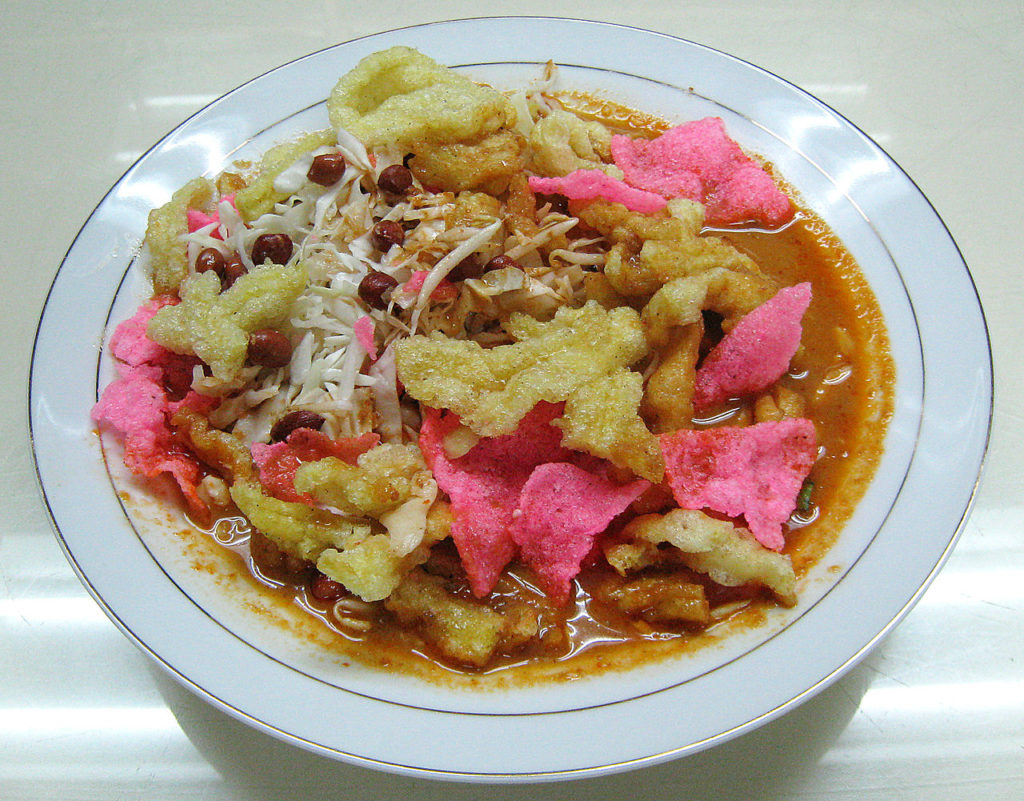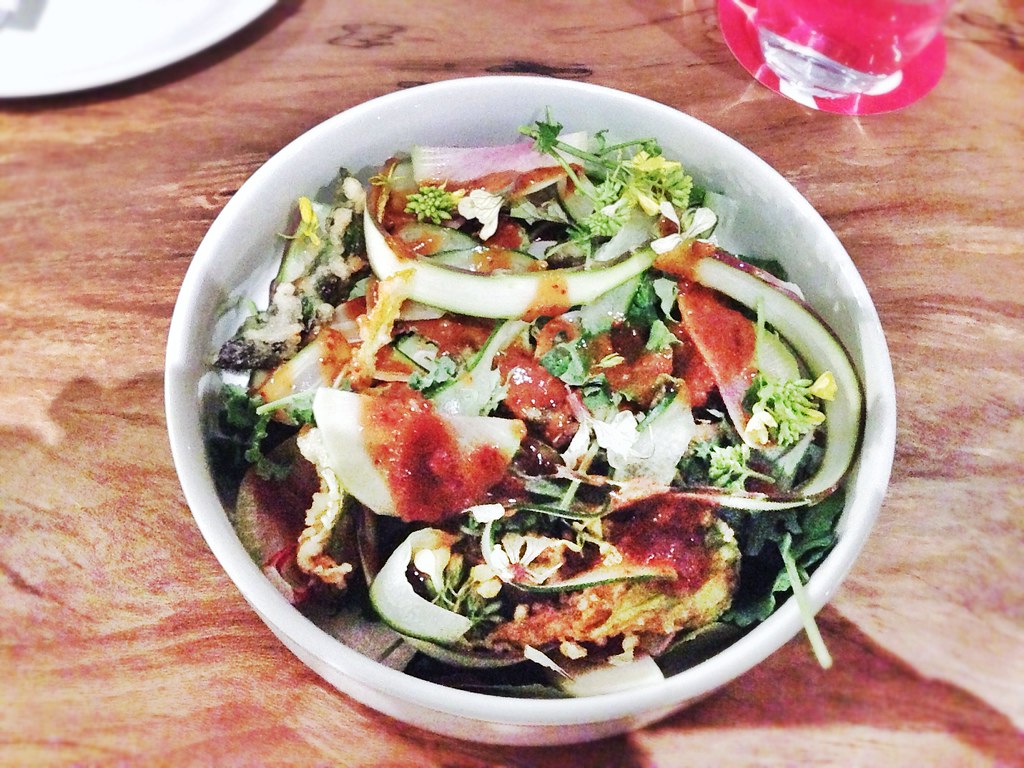Kerabu bambangan
This Bruneian salad makes a great accompaniment to a plate of white rice or fish dishes like ikan goreng masin (fried salted fish).
It is made from bambangan (Mangifera pajang), a mango-like fruit endemic to Borneo. Its rough brown skin hides highly fibrous, yellow-hued flesh that exudes a strong aroma.
The fruit’s unique sweet, sour and savoury flavour works wonderfully in pickles, sambal chilli paste and kerabu – a tangy tropical salad, typically tossed with local herbs and vegetables.
To make this, shredded bambangan is mixed with sliced shallots, scallions, belacan (fermented shrimp paste), chillies, salt, sugar and lime juice. Top with ground peanuts and chopped bird’s eye chillies before serving.
Nhoam trasak
Nhoam trasak is a light Cambodian salad that’s easy to make. With crunchy strips of cucumber as its main ingredient, this salad will keep you cool even on the muggiest of days.
All you need to do is toss cucumber slices, shallots, onions, scallions and minced garlic with a splash of lime juice and fish sauce, season with salt and sugar, and chill in the fridge before serving.
It’s not uncommon to also find other ingredients like cabbage, carrots, peanuts and basil leaves, depending on what’s available, in this versatile dish.
Sweet, sour and spicy, this refreshing salad can be eaten on its own or as a side dish with pork skewers, fried fish or grilled beef.
Buko salad
You might want to skip this one if you’re watching your diet because this Filipino fruit salad is packed with calories.
The main elements of this salad are strips of buko or young coconut flesh, and a can of mixed tropical fruits, which usually includes cubes of pineapple, papaya and cherries.
 These two ingredients are combined with sugar palm fruit, nata de coco, table cream and sweet condensed milk. You can also include fresh fruit like grapes or apples for added texture.
These two ingredients are combined with sugar palm fruit, nata de coco, table cream and sweet condensed milk. You can also include fresh fruit like grapes or apples for added texture.
As most of its ingredients come from a can, whipping up a batch is easy, which is why this sweet, creamy yet refreshing dessert is a mainstay of special occasions.
Asinan
Asinan, literally “salty things” in Indonesian, is a refreshing salad of preserved vegetables and fruits, typically prepared by brining or vinegaring.
A wide variety of asinan can be found throughout Indonesia, but most are served chilled with a sweet, sour and spicy sauce, and topped with rice crackers or noodles.
 Asinan Bogor from West Java is made by soaking pineapple, jicama and green mango in vinegar overnight in the fridge, and is served with a sauce made of chillies, sugar, vinegar and salt.
Asinan Bogor from West Java is made by soaking pineapple, jicama and green mango in vinegar overnight in the fridge, and is served with a sauce made of chillies, sugar, vinegar and salt.
In Jakarta, the popular asinan Betawi consists of cucumber, daikon, carrots, mustard greens and bean sprouts doused in a sauce made from roasted ground peanuts, chillies, salt and palm sugar.
Yum
Yum means “mix” in Thai and includes a wide variety of salads that toss together vegetables, herbs and meats.
A popular example is yum neua yang or Thai grilled beef salad, a bouquet of salad greens, garlic, onions, kaffir lime leaves, chillies, cilantro, mint and basil drizzled in fish sauce, soya sauce, lime juice and sugar.
 Another much-loved salad is yum ma muang ma prao, sour and crisp green mango tossed with toasted coconut, dried shrimp, chillies, shallots and peanuts, coated in a sweet, creamy coconut milk dressing.
Another much-loved salad is yum ma muang ma prao, sour and crisp green mango tossed with toasted coconut, dried shrimp, chillies, shallots and peanuts, coated in a sweet, creamy coconut milk dressing.
Bursting with the spicy, tangy flavours that Thai cuisine is known for, yum is a versatile favourite that makes for a good appetiser or can be enjoyed on its own as a light meal.
According to airasia.com













